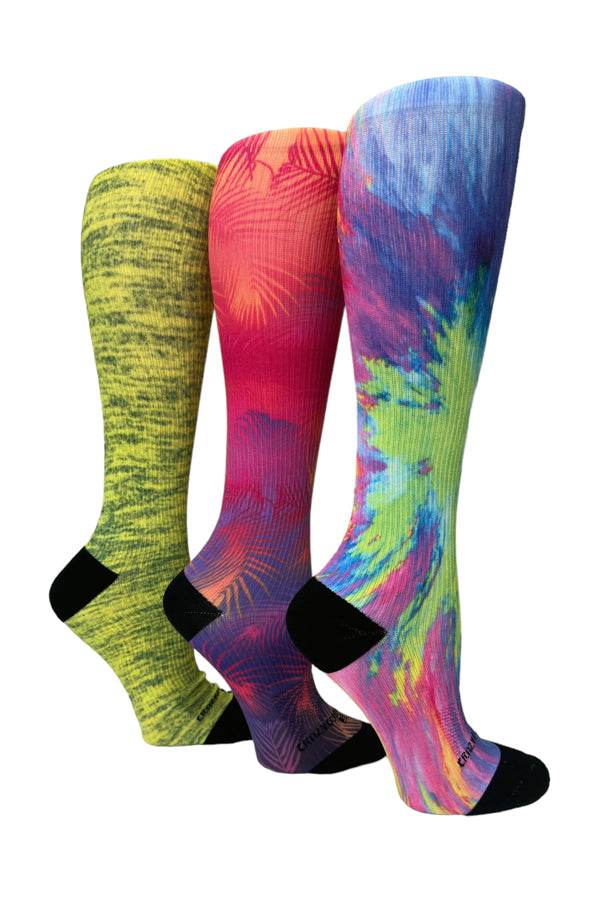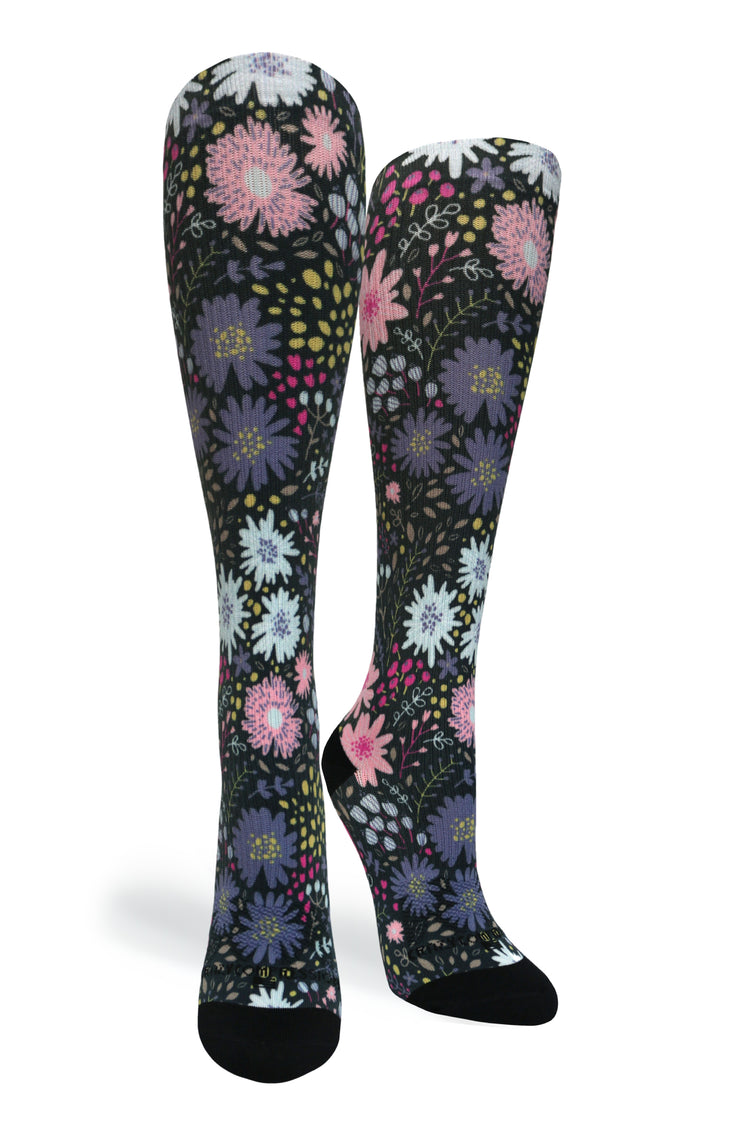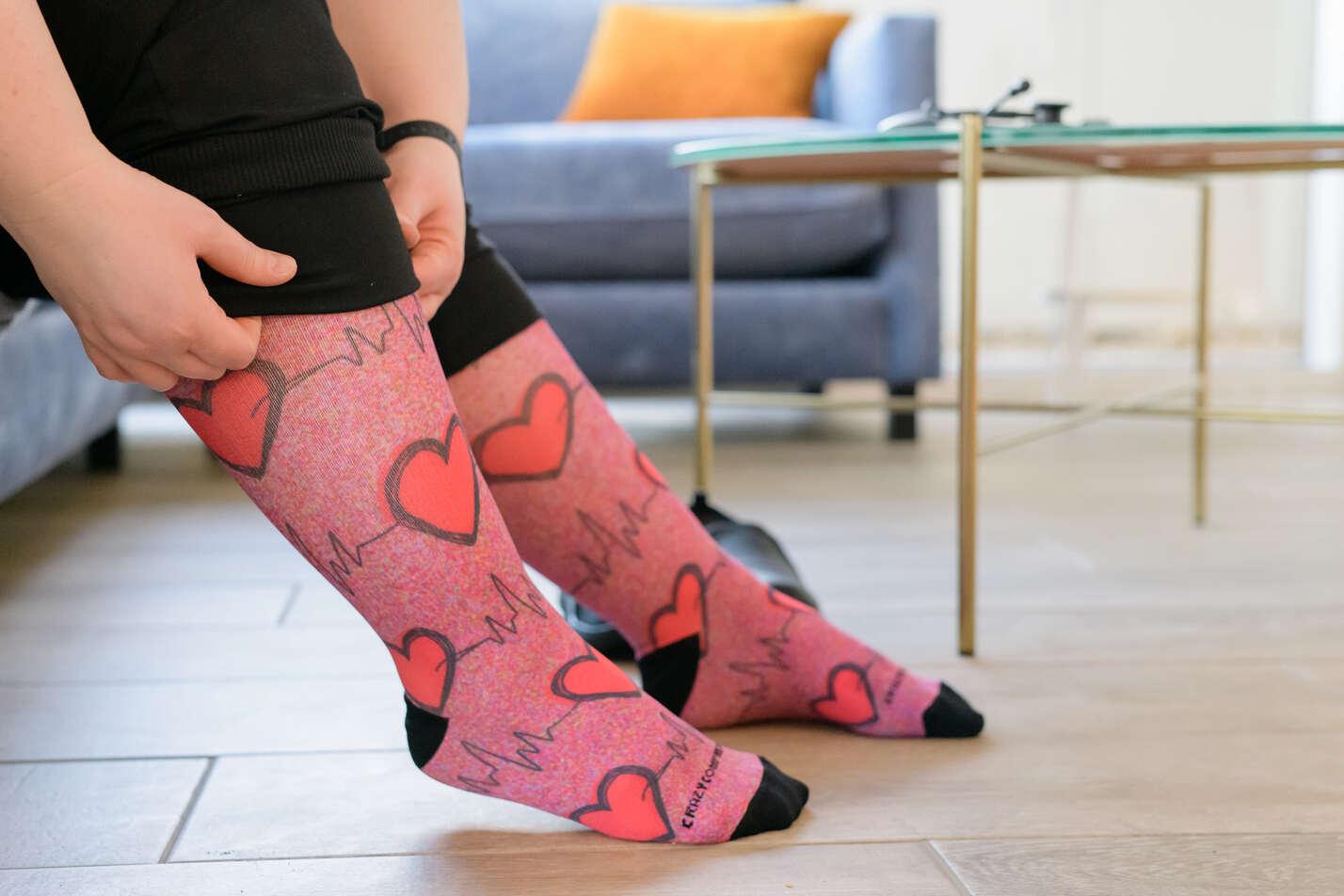Compression socks provide tremendous benefits, especially for improving circulation and reducing discomfort in your legs and feet. However, like any wearable item, they don't last forever. If you're here because you're wondering if, when, and how to know when to replace your compression socks, you've found the right place. So, let's dive into all the ways you can tell when it's time for a new pair!
Signs It's Time to Replace Your Compression Socks
Like any piece of clothing, compression socks will wear out over time. Knowing when to replace them is crucial to ensure they continue delivering your desired benefits. Here are the key signs to look out for:
- Loss of Compression
The most obvious sign that it's time to replace your compression socks is when they lose their snug fit. Compression socks apply consistent pressure on your legs, but the elastic fibers stretch over time. If your socks feel looser or are more accessible to put on than when they were new, they no longer provide the same compression level.
Compression socks should always feel snug but not uncomfortable. If they start feeling like regular socks, it's time to invest in a new pair.
- Thinning or Worn-Out Areas
Check your socks for thinning or worn-out areas, especially on the heels, toes, and soles. Compression socks are typically made of tightly woven materials, but continuous use can cause wear and tear. Suppose you notice areas where the fabric has become thin enough to see through or where your toes or heels are peeking through. In that case, the socks won't provide the proper compression anymore.
Worn-out spots compromise the effectiveness of the socks, making them less helpful in improving circulation.
- Poor Fit
If you've experienced significant weight loss or gain, your compression socks may no longer fit properly. Compression socks need to fit well to work effectively. When your body changes, so should your socks. It's essential to re-measure your legs and feet after a weight change to ensure you're still wearing the correct size. If you need a more oversized fit, plus-size compression socks are available to ensure that individuals of all sizes can receive the proper support and comfort.
- Rolling or Sliding Down
Compression socks that roll down or slide down your legs indicate that the elasticity has worn out. When your socks no longer stay in place, they can't apply enough pressure to your legs. This is especially common in older pairs you've worn or washed frequently.
- Unraveling Threads or Holes
If you notice any unraveling threads or holes in your compression socks, this is a sign that the fabric is breaking down. Even small holes can affect the compression level. If there is any visible damage to the socks, like holes or tears, it is time to replace them immediately.
- Stretched Out
If putting on your compression socks has become noticeably easier over time, they will likely stretch out and lose their effectiveness. While you may have gotten used to wearing them, compression socks should still feel somewhat tight when you put them on. They no longer require compression if they slip on easily like regular socks.
- Loss of Support
The most significant indicator that it's time to replace your compression socks is when the pressure you're accustomed to is no longer there. Compression socks provide consistent pressure throughout the day. If they no longer give you that firm, supportive feeling, they aren't working as intended and need replacing.
How Often Should You Replace Compression Socks?
Generally, compression socks should be replaced every 3 to 6 months, depending on how often you wear them and how well you care for them. Even if your socks don't show obvious signs of wear, the elastic fibers in the fabric will gradually stretch out with use. After six months, most compression socks lose their ability to provide the correct pressure level.
If you wear your socks daily, you may need to replace them more frequently, especially if you notice any of the signs above. Wearing worn-out compression socks can lead to ineffective therapy, which may result in discomfort or a lack of symptom relief. Compression socks that no longer provide adequate pressure fail to improve circulation, potentially leading to swelling, pain, or worsening conditions like varicose veins.
Regularly replacing your socks ensures that you maintain optimal support and reap the full health benefits of compression therapy.
How to Make Compression Socks Last Longer
Compression socks are an investment in your health, so taking care of your compression socks is crucial to ensuring they last as long as possible. Here are some tips to help you extend the life of your socks:
Wash After Every Use
Washing your compression socks after each wear is essential for keeping them fresh and clean. Sweat, dirt, and oils from your skin can break down the fibers over time, reducing the effectiveness of the compression. Be sure to follow the manufacturer's instructions for washing.
Hand Wash If Possible
Hand washing is the best method to clean compression socks because it's gentle on the fabric. Use cold water and a mild detergent, and avoid scrubbing too hard. Gently squeeze the socks to remove excess water, then lay them flat to dry. Avoid wringing them out, as this can stretch the elastic fibers.
If hand washing isn't possible, use the gentle cycle on your washing machine with cold water and place the socks in a mesh laundry bag to protect them.
Air Dry Only
Never put your compression socks in the dryer. The heat from the dryer can damage the elastic fibers and cause them to lose their compression properties. Instead, air dry your socks by laying them flat on a clean surface or hanging them to dry.
Avoid Harsh Detergents and Fabric Softeners
Harsh chemicals, fabric softeners, and bleach can damage the elastic fibers in your compression socks. To avoid weakening the material, use a gentle, fragrance-free detergent.
Moisturize After Removing Socks
Applying lotions, oils, or moisturizers before putting on your compression socks can degrade the elastic over time. If you use skin products, it is best to misapply them at night after you've removed your socks to protect the fabric.
What to Do with Old Compression Socks
Once your compression socks have lost their effectiveness, it's time to consider recycling or repurposing them. Fortunately, there are many ways to recycle socks — especially compression socks, whose stretchy nature makes them handy in various scenarios. Here are just a few ideas:
- Deliver them to a center that recycles textiles.
- Donate them to a local charity in need of clothing items.
- Use them as dusting or cleaning cloths for hard-to-reach surfaces.
- Repurpose them as DIY wrist or knee supports during light activities.
- Cut and sew them into arm warmers or leg warmers for chilly days.
- Use them as packing material to protect fragile items.
- Turn them into pet toys by tying knots in them.
- Fill them with rice to create a microwavable heating pad for sore muscles.
What Is Compression Sock Therapy?
Compression socks, also known as pressure stockings or compression hose, are specially designed garments that apply pressure to your legs and feet to improve blood flow. People wear them to reduce swelling, relieve neuropathy symptoms, minimize the risks of blood clots during pregnancy, promote recovery after exercise, and for other reasons.
These socks come in various compression levels, which people measure in millimeters of mercury (mmHg). The most common levels include:
- 15-20 mmHg: This is a mild compression sock level used to relieve tired legs, mild swelling, or discomfort from long periods of standing or sitting. It's often recommended for everyday wear and travel.
- 20-30 mmHg: This moderate compression sock level is typically prescribed for varicose veins, deep vein thrombosis (DVT) prevention, and mild to moderate swelling.
- 30-40 mmHg: This higher level is often prescribed for severe swelling or medical conditions, including post-surgical recovery.
Compression socks apply graduated pressure, with the strongest compression at the ankle gradually decreasing as it moves up the leg. This helps push blood toward the heart, reducing swelling and improving circulation.
Wearing compression socks can temporarily elevate your blood pressure, but they are generally safe and won't cause high blood pressure. Still, it's always a good idea to talk to your doctor before adding compression sock therapy to your daily routine.
Frequently Asked Questions
How do I know if my compression socks are still working?
If they feel loose or are more accessible to put on than when they were new, they've likely lost their effectiveness. Worn-out or thin areas and socks that roll down are signs that it's time to replace them.
How will I know when to replace compression socks?
Replace compression socks when they feel loose or show visible wear, or you've used them regularly for six months to a year, as their elasticity and effectiveness may diminish over time.
Can compression socks last longer than six months?
Compression socks can last longer than six months with proper care, but their effectiveness decreases over time due to the fibers stretching. They should be replaced after six months of regular use for maximum benefits.
Is it okay to wear compression socks every day?
Yes, as long as you follow your doctor's or manufacturer's advice. Wearing them daily can help manage symptoms like swelling and discomfort, especially those with circulation issues.
What should I avoid when washing compression socks?
Avoid bleach, fabric softeners, and hot water. Always air dry them instead of using a dryer, as heat can damage the elastic fibers.
Can weight changes affect how my compression socks fit?
Yes, weight changes can affect how well your socks fit. If you've gained or lost weight, you must re-measure your legs and ensure you're wearing the correct size.


































Leave a comment
This site is protected by hCaptcha and the hCaptcha Privacy Policy and Terms of Service apply.